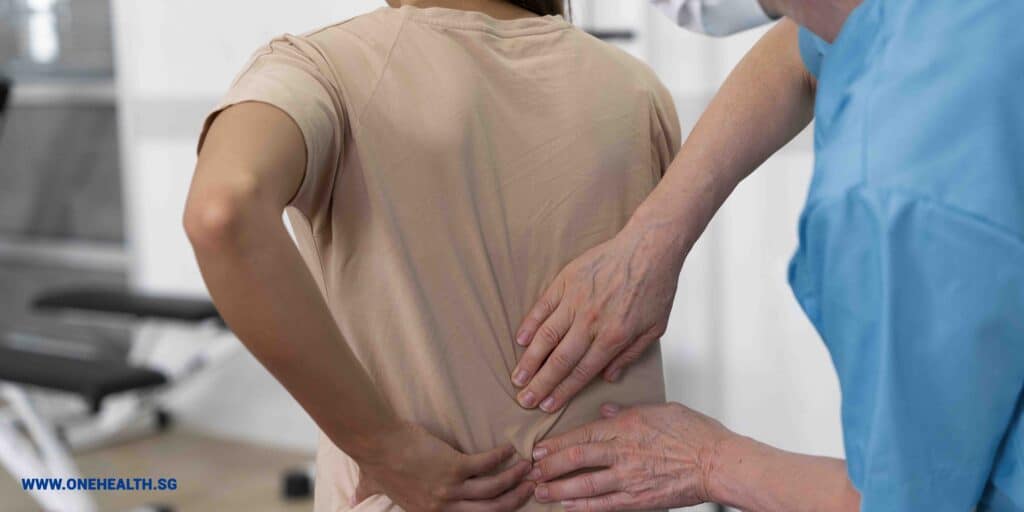Cervical stenosis is a condition characterised by the narrowing of the spinal canal in the neck region, leading to compression of the spinal cord and nerve roots. This condition can cause various symptoms, ranging from mild discomfort to severe neurological deficits. In this article, we will delve into the causes, symptoms, and treatment options for cervical stenosis, shedding light on this common yet often misunderstood condition.
What is Cervical Stenosis?
Cervical stenosis refers to the narrowing of the spinal canal in the neck (cervical) region. It can occur due to various factors, including degenerative changes, herniated discs, bone spurs, or congenital conditions. As the spinal canal narrows, it puts pressure on the spinal cord and nerve roots, leading to symptoms that can affect the neck, shoulders, arms, and even the lower body.

Causes of Cervical Stenosis
- Degenerative Changes: The natural wear and tear of the spinal structures, such as discs and joints, can lead to the development of cervical stenosis over time.
- Herniated Discs: When the gel-like centre of a spinal disc protrudes through the outer layer, it can compress the spinal cord or nerve roots, contributing to cervical stenosis.
- Bone Spurs: The formation of bony growths along the spinal column due to arthritis or other degenerative conditions can narrow the spinal canal and cause stenosis.
- Congenital Factors: Some individuals are born with a narrow spinal canal, making them more susceptible to developing cervical stenosis later in life.
- Traumatic Injuries: Accidents or trauma to the neck region can cause fractures or dislocations, resulting in cervical stenosis.
Symptoms of Cervical Stenosis
The symptoms of cervical stenosis can vary depending on the severity and location of the compression. Common signs include:
- Neck Pain: Persistent or intermittent pain in the neck region
- Radiating Arm Pain: Pain that radiates from the neck down to the shoulders, arms, and even into the hands and fingers
- Weakness: Weakness or difficulty in gripping objects, lifting weights, or performing fine motor tasks
- Numbness and Tingling: A sensation of pins and needles or numbness in the arms, hands, or fingers.
- Balance and Coordination Issues: Cervical stenosis can affect the spinal cord, leading to problems with balance, coordination, and walking.
- In severe cases, it can cause bowel or bladder dysfunction and even paralysis, although these are rare occurrences.
Diagnosis of Cervical Stenosis
To diagnose cervical stenosis, healthcare professionals employ various methods, including:
- Medical History and Physical Examination: Evaluating the patient’s symptoms and medical history and conducting a thorough physical examination to assess reflexes, muscle strength, and sensory changes
- Imaging Tests: X-rays, MRI scans, or CT scans can provide detailed images of the cervical spine, helping identify the narrowing of the spinal canal, herniated discs, or bone spurs.
- Electromyography (EMG) and Nerve Conduction Studies (NCS): These tests assess nerve function and detect any abnormalities or damage.
Treatment Options for Cervical Stenosis
- Conservative Approaches: Non-surgical treatments such as rest, physical therapy, pain medications, and the use of cervical collars can help alleviate symptoms and improve function.
- Epidural Steroid Injections: Corticosteroids injected into the cervical spine can reduce inflammation and provide temporary pain relief.
- Surgical Intervention: In cases where conservative measures fail to alleviate symptoms or in severe cases of cervical stenosis, surgery may be recommended to decompress the spinal cord and nerve roots.
Lifestyle Modifications and Preventive Measures
- Posture and Ergonomics: Maintaining good posture and using ergonomic equipment can help reduce strain on the neck and prevent the progression of cervical stenosis.
- Exercise and Strengthening: Engaging in regular exercise, specifically focusing on neck and core strengthening exercises, can help support the spine and improve stability.
- Avoiding Excessive Strain: Avoid activities that put excessive strain on the neck, such as heavy lifting or repetitive movements.
- Weight Management: Maintaining a healthy weight can reduce the burden on the cervical spine and potentially slow down the degenerative processes.
Cervical stenosis can cause significant discomfort and functional limitations. Understanding the causes, recognising the symptoms, and exploring the available treatment options are crucial for effective management. By adopting preventive measures and making lifestyle modifications, individuals can reduce the risk of cervical stenosis and maintain a healthy neck.
#CervicalStenosis #SpinalHealth #NeckPain #NerveCompression #NerveCompression

